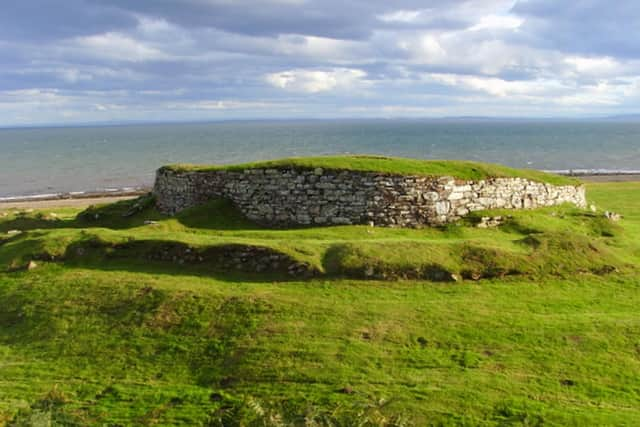Police investigate damage to prized Iron Age broch as stones removed to build cairn
Carn Liath near Golspie – an Iron Age broch that once towered over the Sutherland landscape and was built for both defensive and domestic purposes – has suffered repeated damage and raiding of items of archaeological interest over the centuries.
The police investigation follows an incident in February when a hole was dug close to the outer wall of the broch, one of the best preserved examples in the north of Scotland, raising concerns that items of archaeological importance may have been taken.
Advertisement
Hide AdAdvertisement
Hide AdA spokesperson for Historic Environment Scotland (HES) said: “HES staff visited Carn Liath broch in February and found that a hole had been dug just outside the broch wall.
"A square of turf had been removed and stones and soil upcast from beneath. As this part of the site has not previously been disturbed, sensitive archaeological deposits may have been damaged. In response, HES has appointed its archaeological contractor, CFA Archaeology, to investigate, record and repair the damage.
“Subsequent to this, a further case of damage to this monument has recently been reported to HES from a member of the public who reported finding a new cairn on the site, which appears to have been constructed from stones removed from the broch wall. Investigations into the unauthorised works are ongoing and anyone with any information is urged to contact HES or Police Scotland.
“Carn Liath Broch is an archaeological site of national importance and is protected as a scheduled monument. Unauthorised works on scheduled monuments are illegal and can irreplaceably damage our monuments and cultural assets, causing us to lose pieces of our past forever.”
Brochs are tower-like building types unique to Scotland and which were probably the tallest structures in Western Europe at the time.


Built by high-status members of communities, usually at the heart of a settlement, brochs were constructed from massive drystane walls. The towers typically had small doors and staircases, which wrapped around the inside of structures that rose several storeys.
Carn Liath has endured episodes of damage over its long history. In 1868 the landowner, the Duke of Sutherland, arranged for the site to be cleared with a number of artefacts taken, some which vanished and others which ended up in the museum at Dunrobin Castle. No effort was made to conserve the site, which was left to the elements. In the 1970s, school children dug Carn Liath as part of an unauthorised excavation.
Brochs are a building style unique to Scotland with the structures, which stood up to 16 metres in some cases, likely to have been the tallest in Western Europe at the time.
Advertisement
Hide AdAdvertisement
Hide AdLand at Carn Liath was used before the Iron Age builders moved in with evidence of Bronze Age activity found at the site.


A report by CFA Archaeology said: “The archaeological sensitivity of the broch is high and there is the potential for archaeological features and deposits to survive across the area. The pit digging may have disturbed in-situ deposits and features and may have resulted in the removal of archaeological artefacts.”
Comments
Want to join the conversation? Please or to comment on this article.